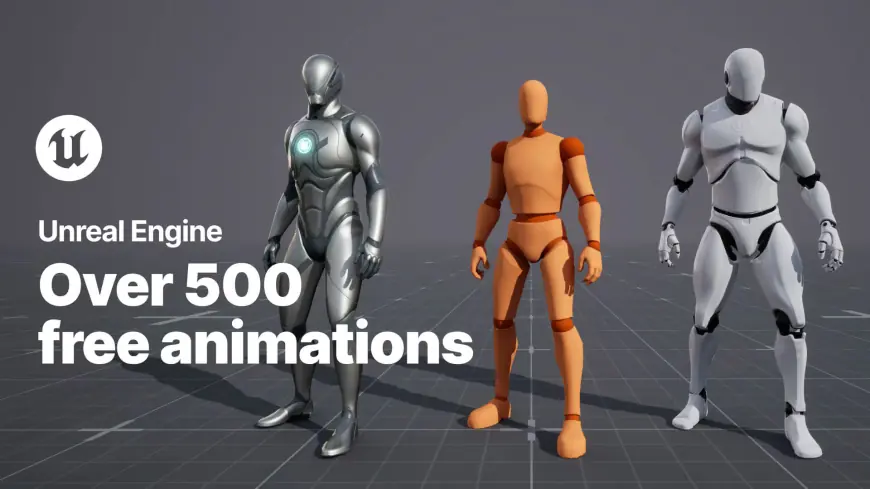The Use of Unreal Engine in Animation Production
Unreal Engine is more than just a game development platform—it has become a game-changer for animation production. Its real-time rendering, cinematic visuals, and collaborative tools are breaking down barriers

Animation has always been a powerful storytelling medium, evolving from hand-drawn sketches to computer-generated imagery (CGI). With the rise of real-time technology, the animation industry is undergoing another transformation, and at the center of this shift is Unreal Engine. Originally designed as a game engine, Unreal Engine has expanded far beyond gaming, becoming a versatile tool for filmmakers, VFX artists, and animators. Today, it plays a crucial role in modern animation production, enabling studios to create faster, more immersive, and cost-effective content.
What is Unreal Engine?
Unreal Engine is a real-time 3D creation tool developed by Epic Games. Its ability to render high-quality visuals instantly has made it popular in industries such as gaming, architecture, and automotive design. However, its use in film and animation production has been particularly groundbreaking. Unlike traditional pipelines, where scenes are rendered frame by frame, Unreal Engine produces visuals in real time, drastically reducing rendering times.
Why Unreal Engine is Transforming Animation Production
Real-Time Rendering
Traditional animation workflows rely on offline rendering, which can take hours or even days for a single shot. Unreal Engine’s real-time rendering allows animators to view their work instantly, make adjustments on the fly, and drastically speed up production timelines.
Cinematic Quality
Unreal Engine supports photorealistic lighting, advanced shaders, and dynamic simulations. These features allow animation studios to create visuals that rival big-budget films without requiring massive rendering farms.
Virtual Production Integration
Unreal Engine is the backbone of many virtual production setups. Animators and filmmakers can visualize characters and environments during live shoots, making it easier to blend animation with live-action footage seamlessly.
Cost Efficiency
By cutting down rendering times and allowing more flexible creative decisions, Unreal Engine reduces production costs. Small and mid-sized studios benefit greatly from its affordability compared to traditional pipelines.
Interactivity and Immersion
Unlike static pre-rendered animation, Unreal Engine opens up possibilities for interactive content. This is especially valuable for VR/AR experiences, immersive advertising, and next-generation animated storytelling.
1. Previsualization (Previs)
With tools like MetaHuman Creator, Unreal Engine allows artists to design hyper-realistic characters in minutes. Motion capture integration enables natural performances, while real-time feedback ensures that directors can guide actors and animators instantly.
Unreal Engine offers a vast library of assets and the ability to build expansive worlds. From fantasy landscapes to futuristic cities, animators can generate detailed environments quickly, reducing dependency on third-party software.
4. Real-Time Collaboration
Multiple team members can work in the same project simultaneously. For global animation studios, this means artists, animators, and directors across different countries can collaborate on the same scene in real time.
5. Interactive Storytelling
Examples of Unreal Engine in Animation Production
Love, Death & Robots (Netflix)
Some episodes from the acclaimed anthology used Unreal Engine for rendering and visual effects, showcasing its ability to handle cinematic storytelling with unique art styles.
The Mandalorian (Disney+)
While primarily a live-action series, Unreal Engine powered the virtual production environments, blending animated backgrounds with real performances.
Animated Shorts and Indie Projects
Many independent creators now use Unreal Engine to produce high-quality animated shorts, bypassing expensive rendering pipelines. For example, Epic Games’ own “Unreal Fellowship” program has supported numerous animators in creating festival-worthy films.
Benefits for Different Types of Animators
Studios: Reduce time-to-market for animated features or series, while maintaining high-quality visuals.
Game Developers: Seamlessly integrate animated cinematics into gameplay, keeping visual consistency across mediums.
Challenges of Using Unreal Engine in Animation
While powerful, Unreal Engine does come with challenges:
Learning Curve: Animators familiar with traditional tools like Maya or Blender may need time to adapt.
Hardware Requirements: Real-time rendering demands strong GPUs and powerful systems.
Pipeline Integration: Integrating Unreal Engine with established studio workflows can be complex.
Despite these hurdles, the benefits of speed, flexibility, and visual quality make Unreal Engine an increasingly popular choice.
The Future of Unreal Engine in Animation
AI and Machine Learning: Integration of AI will automate repetitive tasks like lip-syncing or background animations.
Metaverse and Virtual Worlds: Unreal Engine will be central to building immersive, interactive animated content for the metaverse.
Education and Training: More film and animation schools are incorporating Unreal Engine into their curricula, preparing the next generation of animators.
Conclusion
Unreal Engine is more than just a game development platform—it has become a game-changer for animation production. Its real-time rendering, cinematic visuals, and collaborative tools are breaking down barriers between animation, gaming, and filmmaking. From big studios to indie creators, animators are embracing Unreal Engine to tell stories faster, smarter, and more creatively.
As technology continues to evolve, Unreal Engine will remain at the forefront of innovation, shaping the future of animation for years to come.
What's Your Reaction?
 Like
0
Like
0
 Dislike
0
Dislike
0
 Love
0
Love
0
 Funny
0
Funny
0
 Angry
0
Angry
0
 Sad
0
Sad
0
 Wow
0
Wow
0
























































